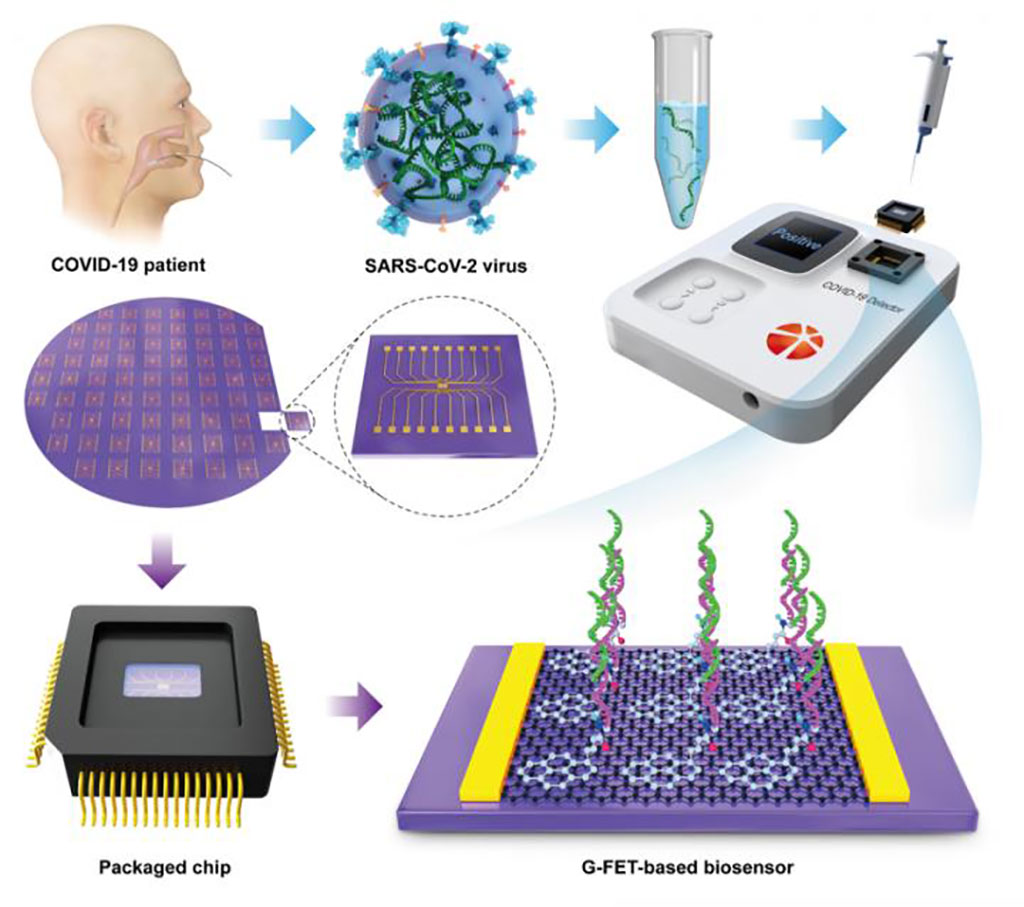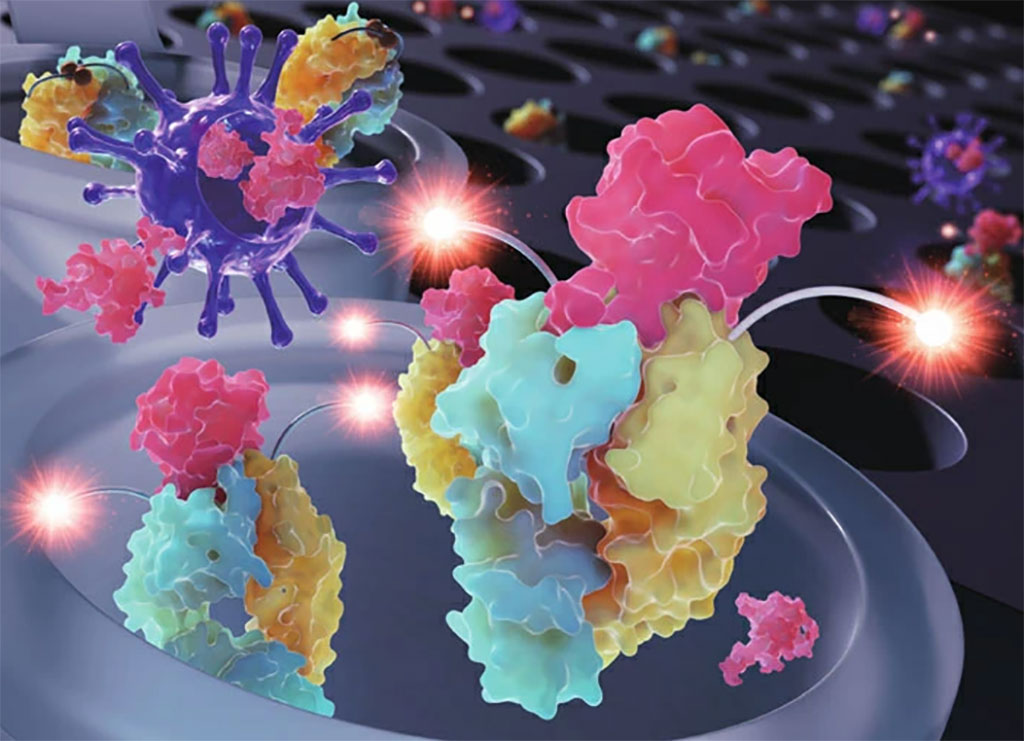Researchers Develop Accurate, High-Speed, Portable Bi-Functional Electrical Detector for COVID-19
By LabMedica International staff writers
Posted on 28 Jan 2021
Researchers have developed an unprecedented accurate, rapid, and portable electrical detector based on the use of graphene field-effect transistors (G-FETs) for the detection of RNA from COVID-19 patients.Posted on 28 Jan 2021
The detection system developed by scientists at the Peking University (Beijing, China) mainly consists of two parts: a plug-and-play packaged biosensor chip and a home-developed electrical measurement machine. The unique feature of this method is that the extent of hybridization between the ss-DNA probe and viral RNA can be directly converted to the current change of graphene channels without repetition of the PCR process, thus affording an ultra-low limit of detection (LOD) of 0.1 fg/mL for the detection of the RNA-dependent RNA polymerase (RdRp) gene target of SARS-CoV-2.

Image: Extraction of viral RNA (Photo courtesy of Science China Press)
Furthermore, this method was validated using clinical samples collected from many patients with COVID-19 infection and healthy individuals as well, and the testing results were in full agreement with those of PCR-based optical methods. The entire process, precluding the extraction of detection targets from oropharyngeal swabs, requires approximately 10 min. Because it does not involve time-consuming PCR step nor expensive instruments, this detection system enables massive point-of-care testing of COVID-19, outside of specialized diagnostic laboratories, with the advantage of high accuracy, sensitivity and low cost.
Notably, false negative results are inevitable in the course of nucleic acid testing; thus, the use of immunodetection as an auxiliary technique is important in the diagnosis of COVID-19 patients, especially those with suspected diseases. By replacing the ss-DNA probe with a SARS-CoV-2 antigen protein, this detection system can also detect SARS-CoV-2 IgM and IgG antibodies with an ultra-low LOD of 1 fg/mL. Immunoassays of serum specimens of COVID-19 patients and healthy subjects matched excellently with those of PCR-based optical methods.
This detecting system exhibits obvious advantages of high sensitivity, rapid speed (10 min for RNA analysis and 5 min for immunoassay), and bifunction (both RNA analysis and immunoassay). These advantages enable high-throughput point-of-care testing, which may facilitate management of the current severe public health crisis. Furthermore, this detection system offers a universal methodology that is ready for immediate application in rapid detection of novel viruses in future.
Related Links:
Peking University







 assay.jpg)





